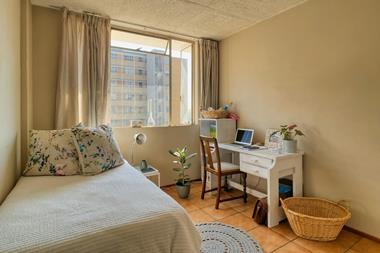The ongoing need for healthcare and the demographic shift make senior housing a strong contender for institutional portfolios. Christine Senior reports
The demographic time bomb is regarded as one of the greatest challenges facing modern societies. But the ill wind of an ageing population blows some good for investors in services for the elderly. The provision of housing, nursing services and specialist senior living facilities is set to be a growth area, and likely to offer attractive returns to investors. The greying of Europe is well documented. According to Eurostat, the population aged over 65 is expected almost to double from 16.4% in 2004 to 29.9% in 2050, with the over 80-year-olds expected to climb from 4% to 11.4% over the same period. Italy with 14.1%, Germany with 13.6%, and Spain with 12.8% will have the largest number of these very elderly. And alongside this rapidly ageing population, governments are turning more and more to the private sector to provide the services they will need."Many property types will be hit by the demographic development in Europe, either in absolute or at least in relative terms," says Tobias Just, head of real estate research at Deutsche Bank. "Demand for properties for the elderly and especially for those with special nursing care, however, will increase strongly over the next decades."A major appeal of investing in senior housing is its inflation-linked returns. Greg Wright, a principal at Mercer, says funds investing in senior housing fall into an investment category that offers an alternative to inflation-linked bonds, which also includes such assets as student accommodation, infrastructure and GP surgeries.
"Typically you are able to construct leases that have inflation proofing built into them," he says. "You are not looking to buy the property as such but the series of long-term, inflation-proof cash flows that comes out of the investment. That is very attractive to pension funds."Ingrid Hulshoff, portfolio manager of the ING Real Estate's newly launched European Healthcare Property Fund, also underlines the value of the inflation hedge to pension funds."If you ask pension funds what is their greatest fear at this moment they will say inflation," she says. "That eats at the investments you have, so in the end you don't have any money left. We think we offer a good inflation hedge. We also offer diversification potential. Healthcare property acts differently from other real estate sectors like office or retail. Pension funds are looking at alternative asset class opportunities right now, for instance infrastructure and sustainable assets, and healthcare is an alternative as well. I haven't met a pension fund investor yet that wasn't interested in investing in healthcare."
Geert de Nekker, director at Cordares Real Estate, says that houses with specific services can attract higher rents than the same houses without them."This means from an investor's perspective that returns on investments in senior housing are mainly based on a relatively high income return, also linked to inflation, while capital growth will be moderate," he says. "The risks are relatively low, bearing in mind the nature and the growth of the target group and on the condition that the company that provides the services is capable of offering constantly a high-quality product."As well as being relatively stable, the cash flows from nursing care in western Europe are often backed by a kind of guarantee, because they are supported by a regulation from the state or local authorities. These favourable factors for investing in senior housing are likely to become more and more important. Other governments will have to follow the lead of such countries as Germany, France and the Netherlands and make senior housing more commercial and open to private investors, says Hulshoff. "We believe at ING that due to demographics and ageing all the current health systems in Europe have to be changed because otherwise we can't afford health services any more in future," says Hulshoff.
Although demographics favour the nursing home sector, not all countries are equally desirable as investment targets. Just outlines a number of factors that make some countries more attractive as destinations for nursing home investors. One prerequisite is that countries should be wealthy, with well-developed pension systems or insurance schemes to cover nursing care for the elderly. A rapidly ageing society and low fertility is also a favourable combination for the sector. If people have fewer children, they will have to rely on external services to look after them in their old age."In Germany two-thirds of all nursing activity is done by a woman at home, primarily by a daughter," says Just. "In a country with fewer daughters and lower fertility rates you have to have professional help because the nursing activity cannot be taken care of at home to the same extent."
Just favours larger countries because they offer a bigger supply of properties, so offering investors the chance to diversify their portfolios through owning a number of properties.
"That is why Germany is interesting," he says. "If you invest in Frankfurt a new property in Berlin or Mannheim is not a risk for you; it will be additional supply. By putting your investments in many different regions you can mitigate supply-side risk."
Spain is also liked by Just, because of its rapid economic expansion, combined with an ageing population and low fertility. "The Spanish have acquired income and wealth in the last few years but they don't yet have the supply they might need in the next 10 to 15 years. This is something for project development not buying into properties," says Just.
But the sector is not without risks. Although cash flows might be guaranteed by governments, governments change, and any government can make a U-turn mid-term if they need to. What looked like a guaranteed return could disappear almost overnight if the government changes its policy. Cash-strapped governments might change the rules to save money. In Germany, for example, payment for care services that people receive in their own homes is less than for similar services provided by a nursing home.
"Parliament can change the rules," says Just. "If they want to save money they can simply say we want to strengthen nursing at home, not in nursing homes. If they need to adjust the fees, there is the risk it can be changed. However, this dependency also applies for the upside. Parliament might decide to broaden the group of potential beneficiaries of nursing assistance, for example for the group of old people suffering from senile dementia."Another risk highlighted by Just is on the supply side. The demographic argument in favour of nursing homes is widely understood, and could tempt in too many providers, leading to a glut of property. "Nursing homes will remain a niche segment, growing but still niche," says Just. "A niche segment by definition is prone to over investment if too much money flows in the same stream. A lot of interest can push yields downward."A potential downside for Wright at Mercer is the limited value of the underlying properties for alternative use. "The investments themselves might not have tremendous alternative value in the same way as a shop or office, which someone can readily come into and use. These sit outside prime space, and there is more property-specific risk."And the underlying operator could run into financial difficulties. At the moment in the UK, Southern Cross is a particularly high profile example of this.
Although there is a limited supply of suitable funds for investors, new launches are opening up possibilities. ING REIM's new fund, launched in June this year, is targeting properties in eight European countries, but as a first step is focusing on France, Germany and the Netherlands. With a proposed size of €800m, it will target an internal rate of return of 8% over the first 10 years, by investing in three sub-sectors - cure (hospitals), care (nursing homes) and commercial (so-called medimalls that sell health-related goods). ING REIM says these areas offer diversification because they have a low correlation with consumer spending, economic growth and business confidence.
Germany is proving something of a magnet for healthcare property investment. The sector has been boosted by the government's emphasis on choice in care of the elderly - which allows Germans to decide how they want to access senior housing - and by an increase in government funding to care home operators. "The German nursing home sector is expected to experience continued growth in demand caused by general trends in the ageing population as well as replacement of obsolete facilities," says Marc-Philipp Martins Kuenzel, a managing director at HSH Real Estate. "In a recent research study, HSH Real Estate has forecast up to €12bn of additional demand for nursing homes over the next 12 years."This favourable outlook prompted the partnership between HSH Real Estate and Mariner Financial that will manage portfolios of German nursing home assets. The joint venture plans to buy properties worth €500m, and in the first instance the funds will be targeted at Australian institutional investors, although similar funds for investors elsewhere could follow. It is US pension funds that first began to recognise the value of senior housing as an investment. CalPERS, which began investing in the sector in 2001, now has an allocation of up to 15% of its real estate portfolio. Senior housing accounts for 2.7% of CalPERS's specialised equity real estate portfolio, and is valued at about $338m. It invests in properties located throughout the US via joint ventures and internationally via funds. In its statement of policy for the senior housing programme, CalPERS says the strategy is to preserve investment capital, generate attractive risk-adjusted returns and provide a hedge against inflation. Last year the New York State Pension fund invested in a project for senior citizens in Lackawanna that involved gutting and refurbishing 74 units in a former hospital to make apartments for residents aged over 55. This was done in partnership with developers and a mortgage lender, the Community Preservation Corporation. The arrangement involves the pension fund taking on the loan after the completion of the project and then collecting loan payments from the developer, which gives it a competitive return on its investment.
By contrast, European funds lag behind their US counterparts but interest is beginning to stir and senior housing investment is actively being considered by some pension funds.
One barrier to entry for pension fund investors is the lack of suitable investment-grade vehicles, according to de Nekker. Cordares' solution is to consider creating its own fund.
De Nekker says: "Cordares RE is now examining the feasibility of creating its own Cordares Dutch Senior Housing Fund in co-operation with third parties that not only offers houses suitable for the elderly people but also offers specific services."
At Mn Services, Michiel van Staveren, manager of its Dutch real estate portfolio, is also positive about the possibility of investing in Dutch senior housing, but for the moment he believes it's too early for pension funds to consider it."In Holland I think this is an up-and-coming market," he says. "Everybody is looking at the possibilities but real investments are very low. If we invest for example in 100 standard residential units, we can estimate our profits from rental income (direct profit) and increase in capital value in future, but we can't do the same for senior housing, because the value development (indirect profit) can be low."A big hurdle for van Staveren is the level of government regulation in these kinds of developments which, as with social housing, would limit the level of rents.
"We operate as a pension fund in the free market," he says. "A lot of senior houses are small, maybe 40-50m2, so, by government regulation, we can't ask a lot of rent. That's the main reason we don't invest. We think there is too much influence from the government, too many regulations." Another factor that for the time being limits pension scheme involvement is the lack of suitable properties to buy. "For risk diversification you have to invest in several locations to put together a portfolio," says van Staveren. "You have to spend a lot of time and patience to build a portfolio. Some institutions in Holland are building their own fund and looking for investors. It's starting and is definitely something for the future."












